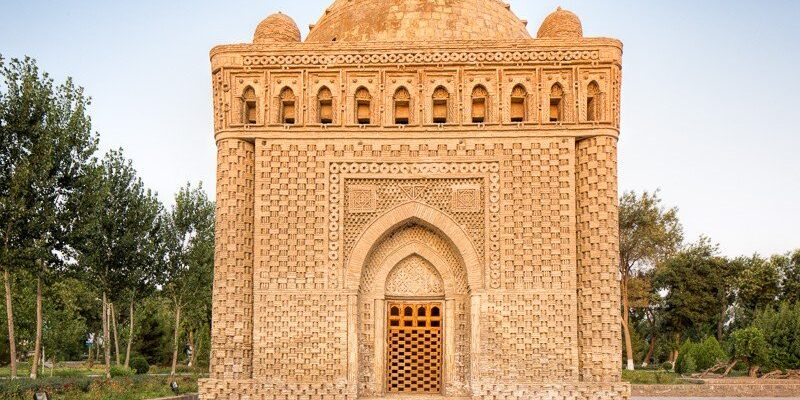Samanid Mausoleum (Ismoil Somoniy maqbarasi)
Samanid Mausoleum is a family tomb and one of the ancient architectural masterpieces of the Uzbek city of Bukhara. The picturesque mausoleum was built at the turn of the IX-X centuries and is considered one of the pearls of world architecture. Bukhara builders managed to achieve harmonious architectonics and create a magnificent decoration of the building from brick patterns.
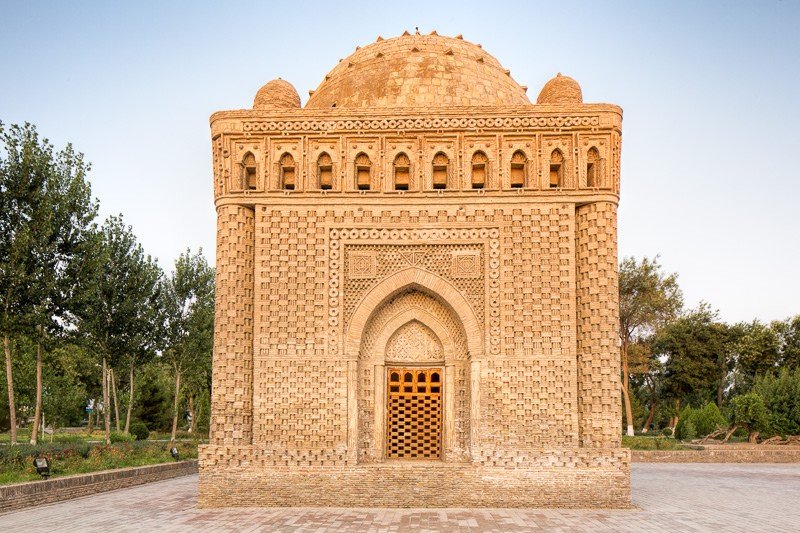
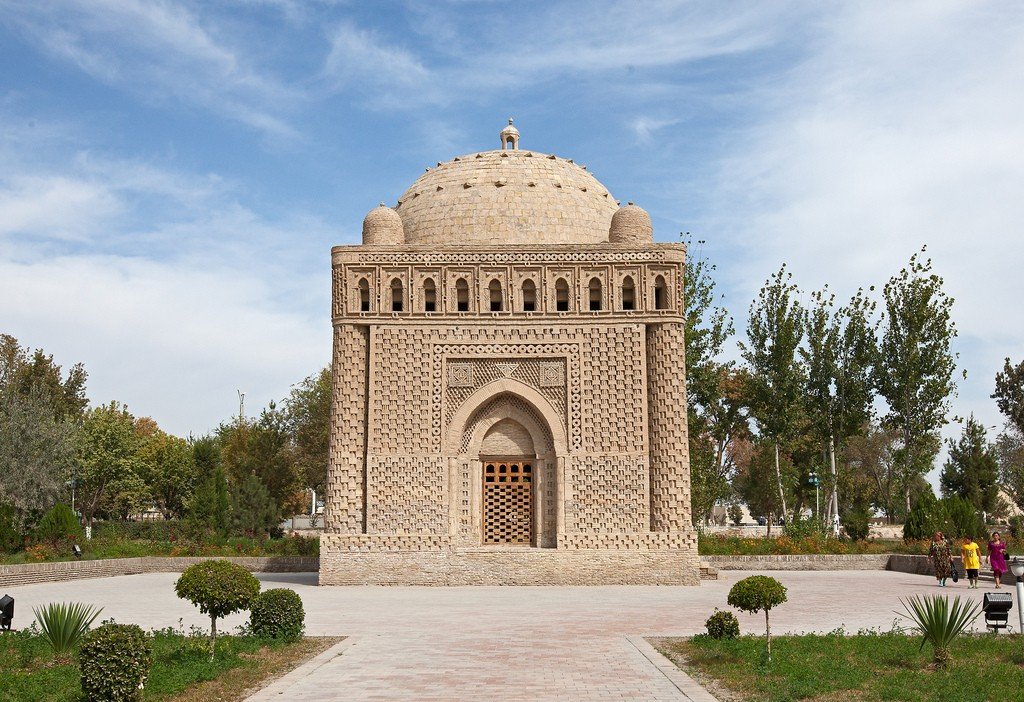
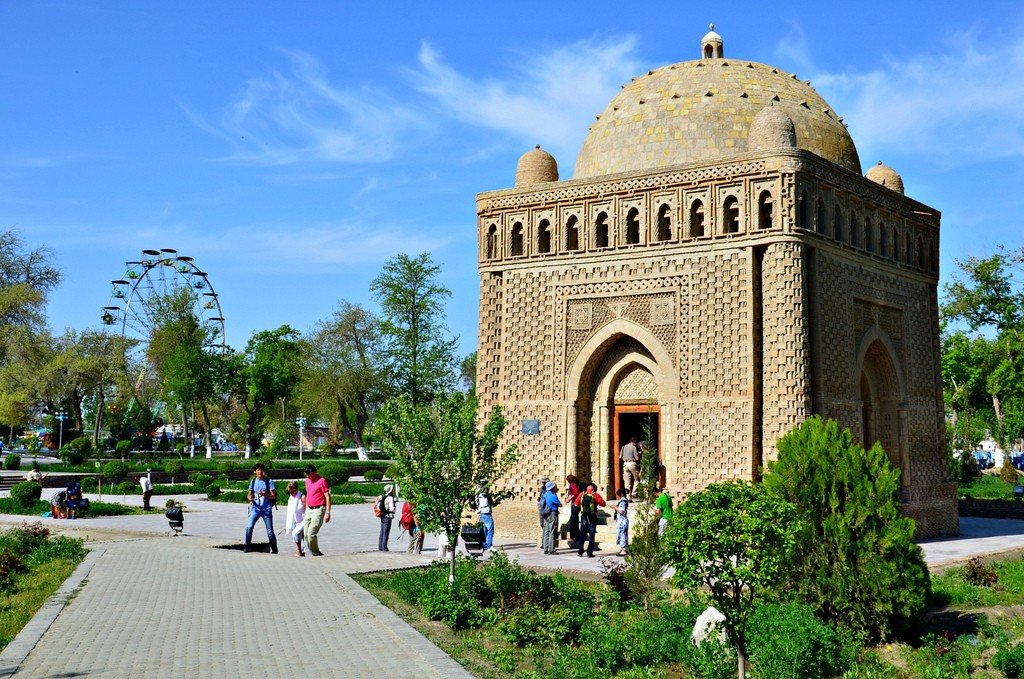
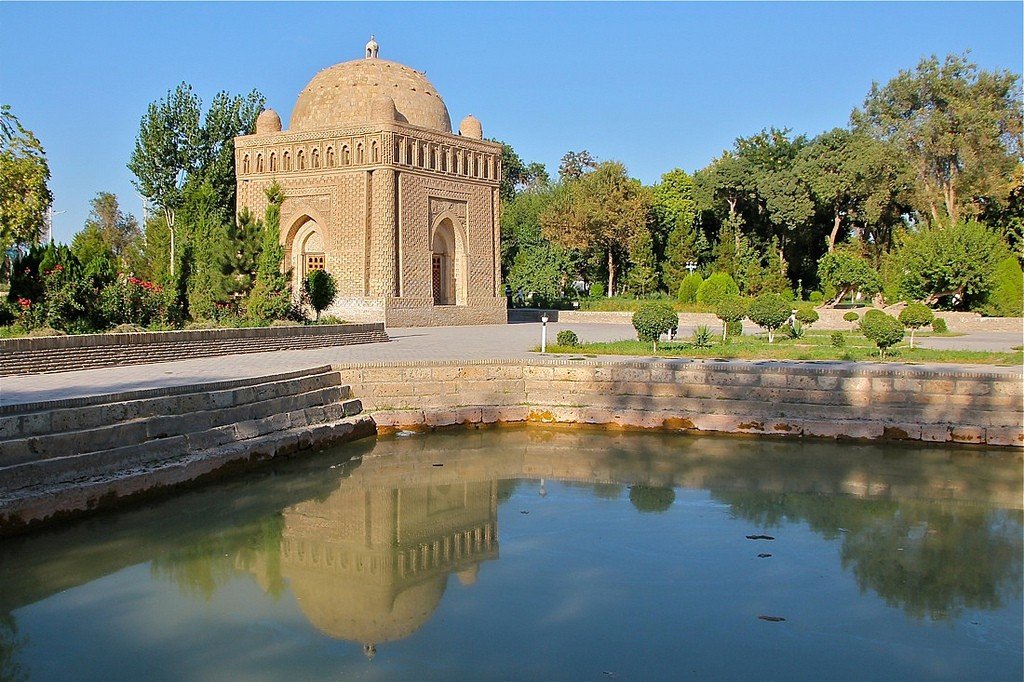
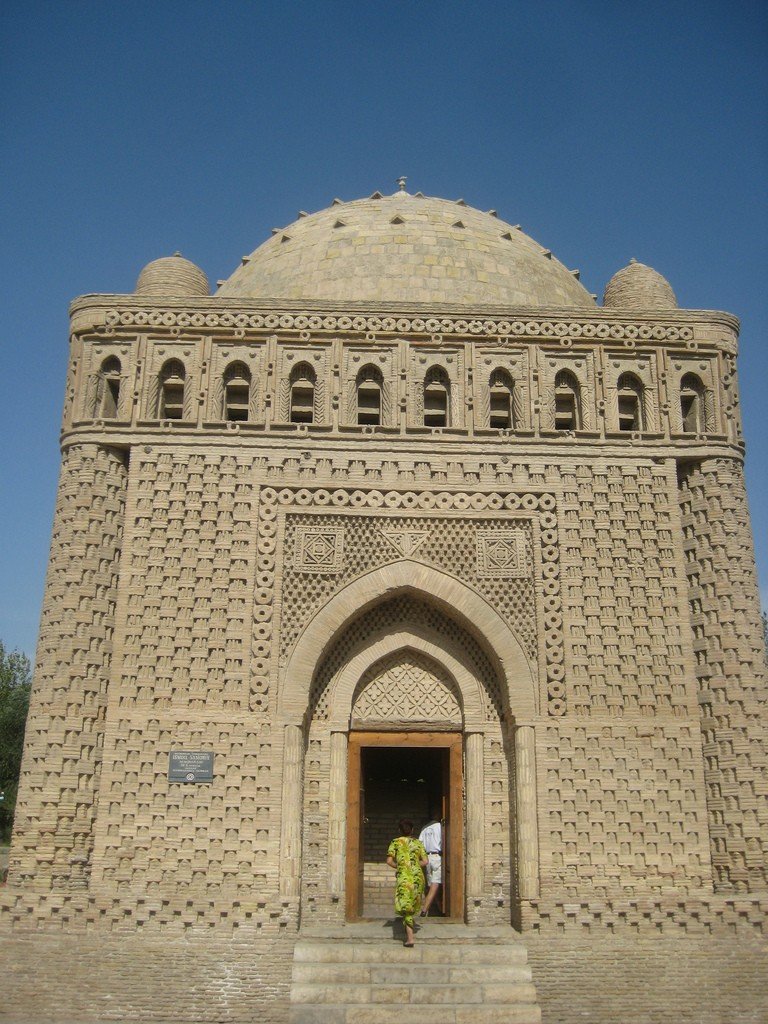
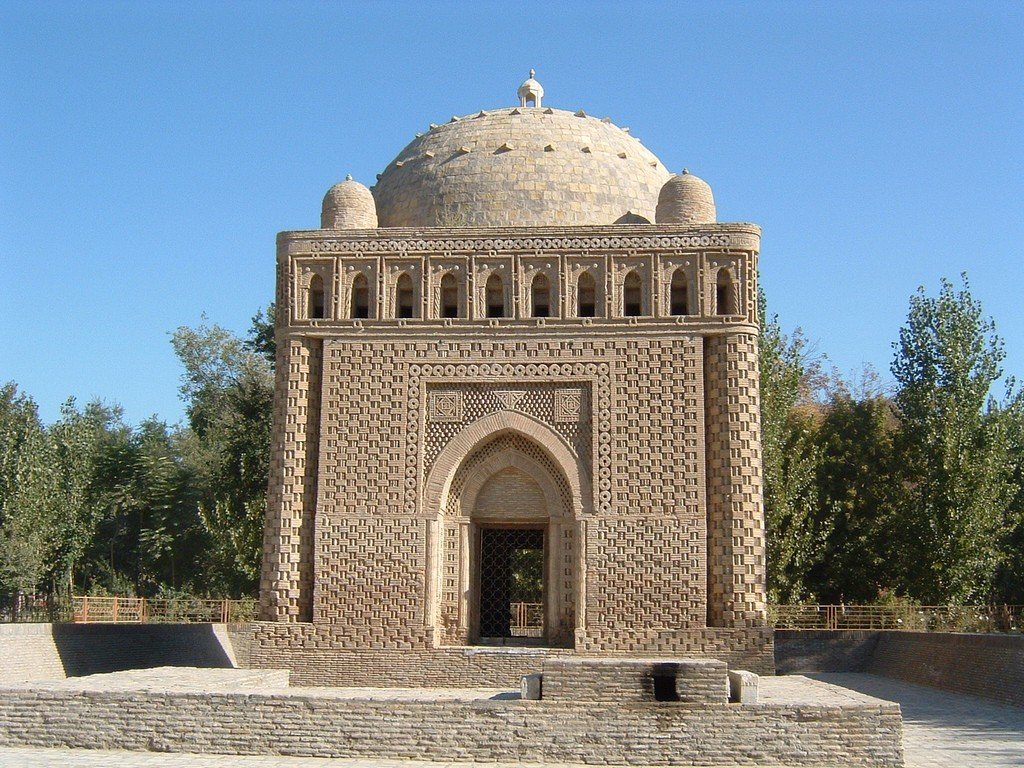
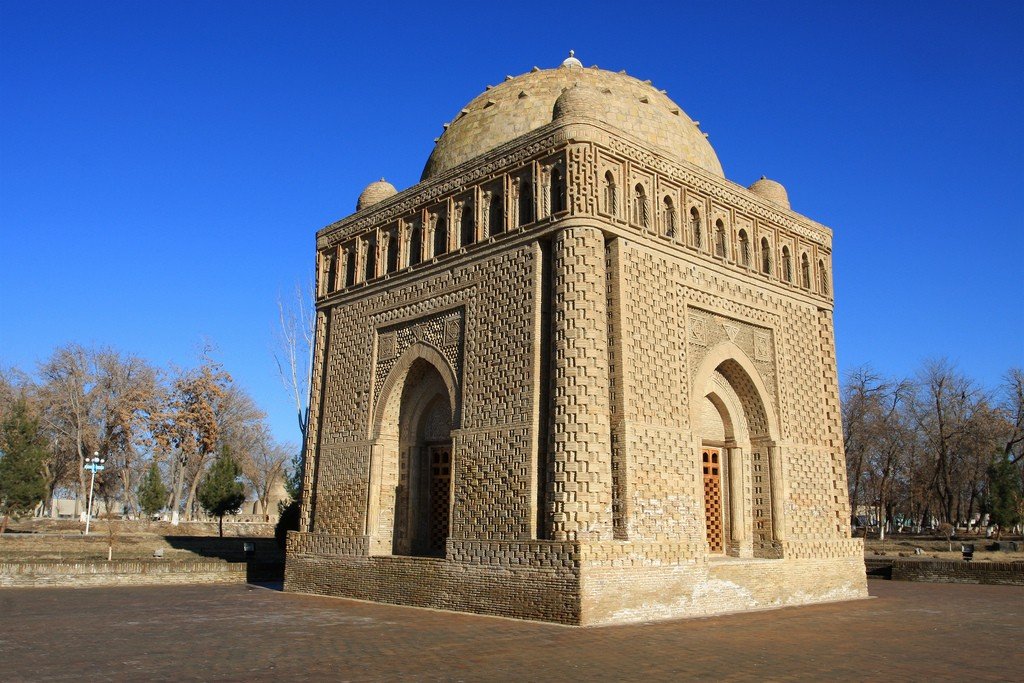
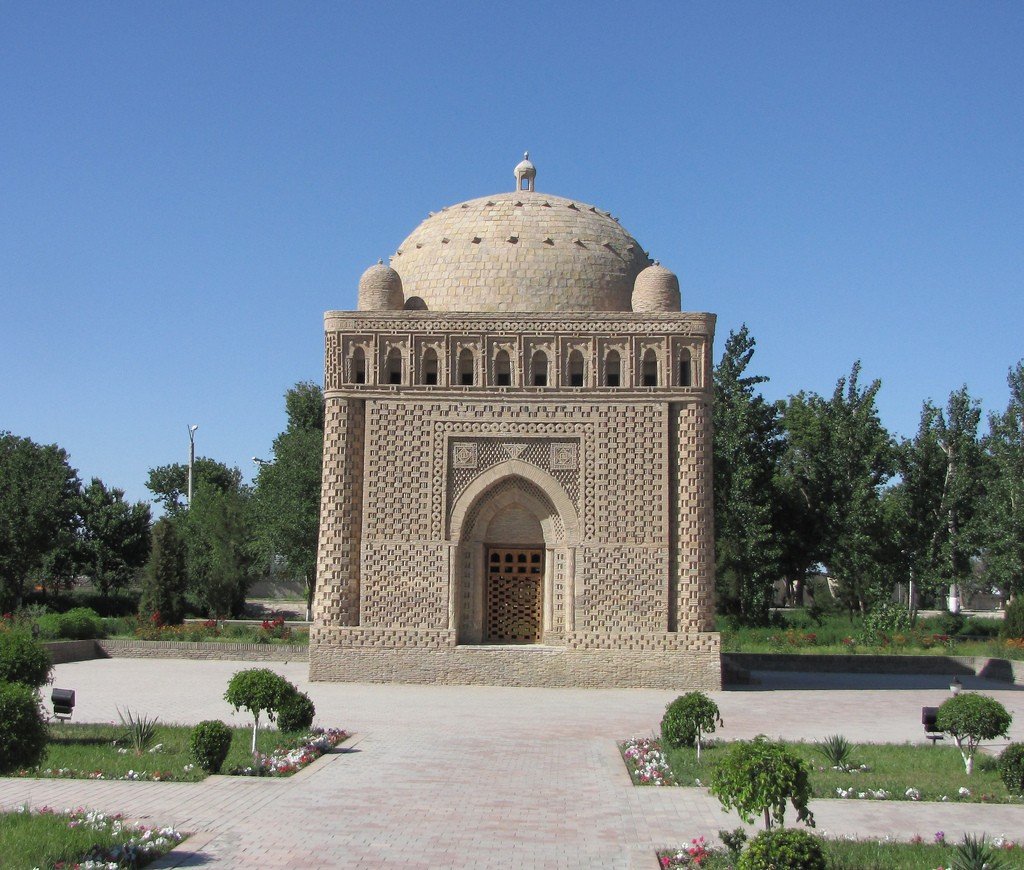
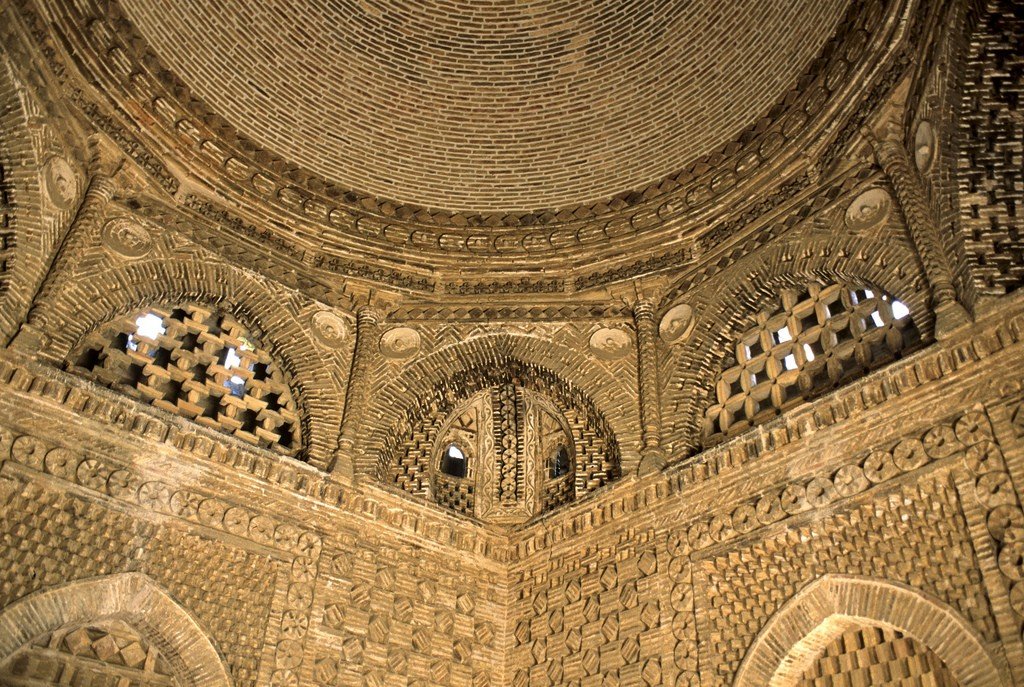
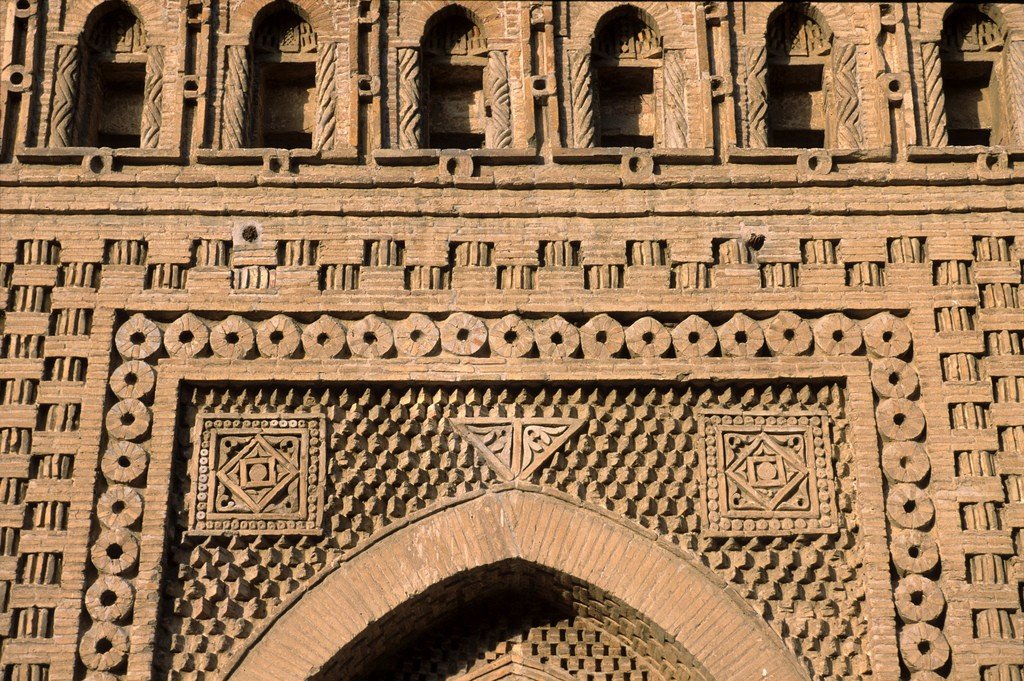
Highlights
The Samanid dynasty achieved independence from Baghdad and began to rule over Central Asia in the second half of the 9th century. The state created by it reached its power under Ismail Samani. By his order in 892 the construction of the mausoleum began. It is known that the construction of the tomb lasted until 943. Inside the mausoleum of Samanids three burial places were preserved. Perhaps Ismail Samani himself, his son Ahmad ibn Ismail and father Ahmad ibn Asad rest here.
.According to legend, the ancient tomb has been lying underground since the time of Genghis Khan. The locals were afraid that the terrible conqueror would plunder and destroy their shrine, so they threw sand up to the top of the mausoleum and hid it from human eyes for many centuries. Be that as it may, until the XX century the Samanid mausoleum was under the cultural layer. Then the building was cleared, and in 1934 it was restored.
.The openwork tomb stands in the green park of the Samanids, which was laid out on the territory of the ancient Muslim cemetery. This place is very popular with the residents of Bukhara. On the territory of the park there are ponds and attractions, mass festivals and colorful festivals are held here.
.
From the outside, the Samanid mausoleum can be viewed at any time of day, and inside it tourists enter daily from 8.00 to 17.00. It should be borne in mind that entrance to the tomb and photography inside are paid.
.Features of the architecture
The Samanid Mausoleum is built in the form of a cube and covered with a hemispherical dome. These simple and harmonious forms were determined by the canons of Islam, which have roots in the older pre-Islamic culture. The cube used to be considered a symbol of stability and represented the Earth. The rounded dome symbolized the vault of heaven. The union of the cube and hemisphere signified the harmony and unity of the universe, so the builders perceived the mausoleum as an ideal model of world order.
.
There is a gallery with small lancet windows along the top of the building, and its corners are framed by three-quarter columns. The walls of the tomb are up to two meters thick. It was such strong walls that allowed the Samanid mausoleum to survive more than ten centuries.
.The cult building has no decoration of smalt or colored tiles, which in later times became an obligatory element of decoration of Central Asian buildings. Outside and inside the tomb is covered with openwork masonry of vertically and horizontally standing burnt bricks, imitating the ornamental motif of “wicker.”
The frieze of the building is surrounded by rings of bricks, lined up in a chain. They are very reminiscent of the decoration of pre-Arabic palaces or “Sasanian pearls” preserved in Central Asia and Iran. Unlike the Samanid mausoleum, where these patterns are lined with bricks, in ancient palaces the drilled beads or “Sasanid pearls” were carved on plaster from clay gypsum or ganch. Curiously, ganch carving is still widespread in Central Asia and the Caucasus.
.
Because of the early time of construction, the building of the mausoleum violates some Muslim norms of architecture. The cubic tomb has a covered structure, although such constructions are forbidden in Islam. In addition, the design of the building shows features traditional for the sanctuaries of the Zoroastrians.
.The Samanid Mausoleum is considered one of the oldest monuments of Islamic architecture in Central Asia. This tomb laid down a new architectural style that later spread to religious buildings in the region.
.
How to get there
The Samanid Mausoleum is located in the northwest of Bukhara, in the Samanid Park. You can get here by buses number 6, 8 and 23. Get off at the Registan stop.
.
